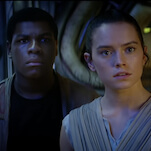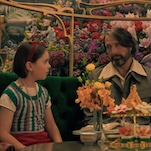Trapero's real-life grandmother Graciana Chironi plays the octogenarian matriarch of a sprawling middle-class family. When Chironi gets asked to be the matron of honor at a niece's wedding in Brazil, a dozen relatives join grandma in a rickety camper and head north. In that cramped space, marriages crumble, cousins get the hots for each other, and every minor irritation, from gas prices to toothaches, is magnified. Rolling Family is episodic and elliptical, relying on aimless, unscripted conversations and whatever fond associations viewers already have with campouts and family barbecues. On a very basic level, it's the kind of movie that gets laughs from a cranky dad grumbling about the tolls.
But it also looks too good—and is a little too dissonant—to dismiss as mere feel-good middlebrow arthouse slop. Trapero focuses on hazy morning sunrises and landscapes rushing by, and the way he frames the action in that tiny camper is like an extended, bravura stunt. Trapero finds a visual analogue for the dilemma of the family, inside and outside the camper, as they try to keep secrets from each other and fail miserably. Still, after an hour and a half of exquisite photography and mushy action, audiences may well ask the unspoken question that plays across the faces of the Rolling Family clan right before the closing credits. Was it worth it?









































